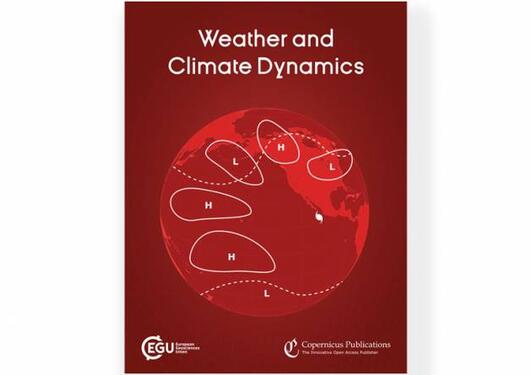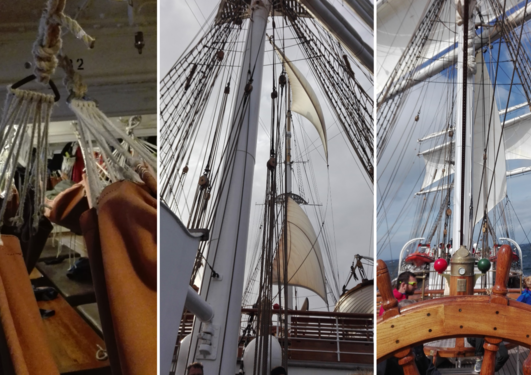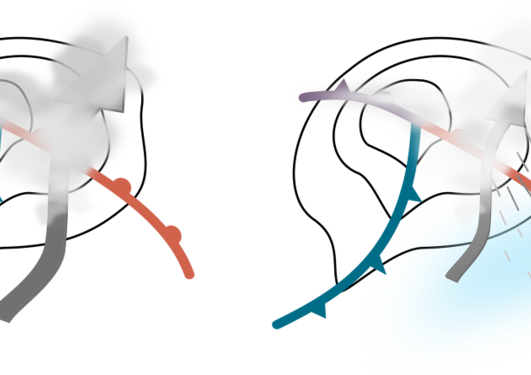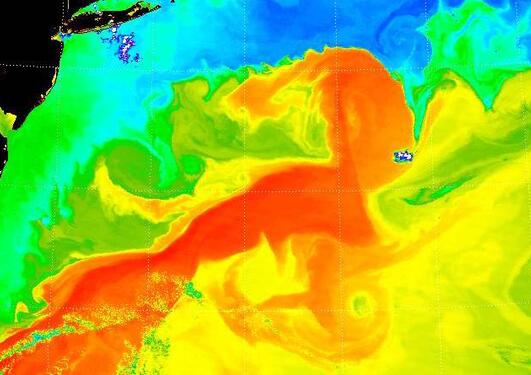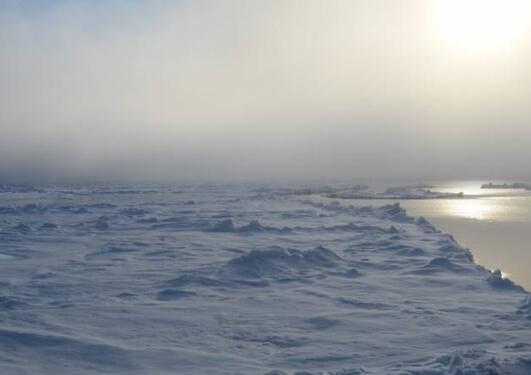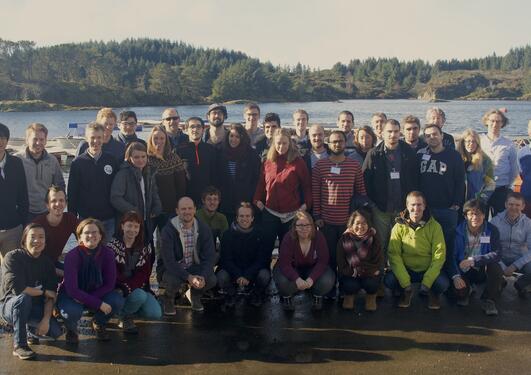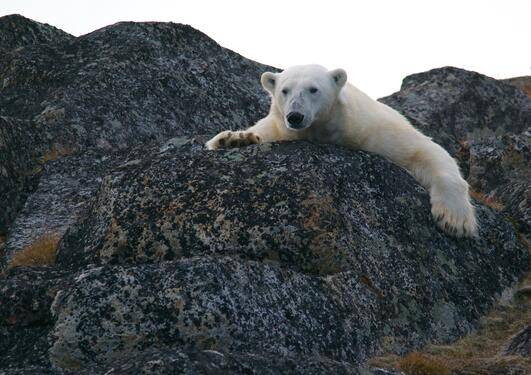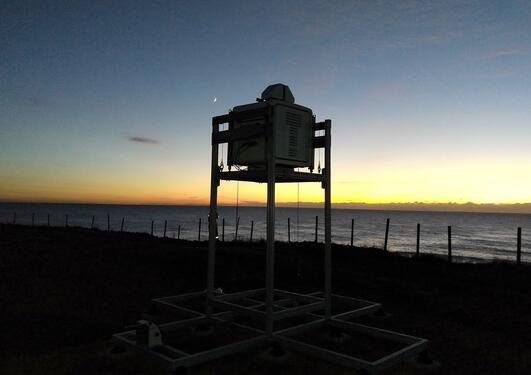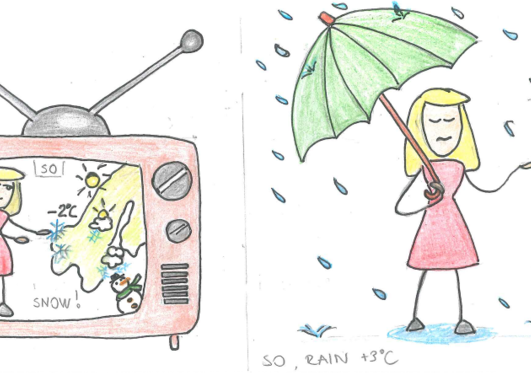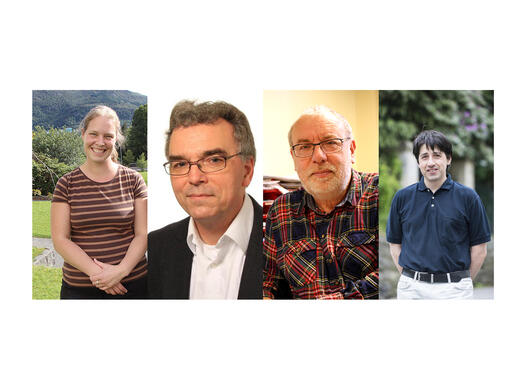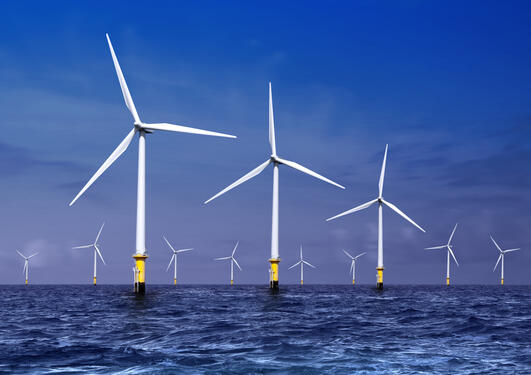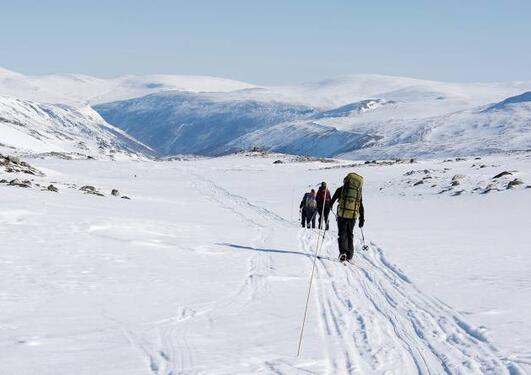News archive for Meteorology
Camille Li is editor for the new open-access EGU publication.
Earlier this August Statsraad Lehmkuhl sailed to Arendal, combining the voyage with a climate and renewable energy conference in collaboration with the Bjerknes Centre
Evaporation demands energy, condensation releases energy. Both can affect the development of midlatitude cyclones, often associated with clouds and rain. A new study addresses how evaporation of rain contributes to cyclone development. Lead author Kristine Flacké Haualand explains.
Allocations from the Academy Agreement between UiB and Equinor were announced on 28.06.2019. Four research projects on offshore wind received funding. In addition BOW was allocated funding for two Associate Professor II positions.
«The mid-latitudes are one big, chaotic mess”, says Camille Li.
SNOWISO field season started at the EastGRIP camp, on the Greenland Ice Sheet.
The Gulfstream makes northern Europe warmer by transporting heat. This is well known. New research shows that the sea surface temperature also affects storm tracks as far away as the Pacific.
A newly published study in Nature Communications shows an important new understanding of the climate system that will allow us to better understand past climate variability. The results were uncovered by expeditions between the North Pole and Antarctica.
On 3-8 March, 29 participants and 10 expert lecturers attended a winter school at Kvalheim Fritid on Radøy near Bergen.
Did you know that the El Niño Southern Oscillation is a phenomenon involving two-way interactions among the tropical basins? Noel Keenlyside writes about a recent study he has contributed to.
Since 1971 Svalbard has experienced a winter warming of 7°C. This has caused major changes, and there is an urgent need to plan for the future, states the new “Climate in Svalbard 2100” report.
Floating wind turbines keep getting bigger, giving us more energy. A UiB-project will measure the wind's capabilities in an entirely new fashion, paving the way for more efficient wind energy at sea.
Even though weather forecasts have become very good over the last decades, you can sometimes be waiting for snow that never falls. A new study searches for the origins of an erroneous forecast.
What caused abrupt climate swings known as the Dansgaard-Oeschger events of the last ice age?
Almost one-fifth of the world’s population depends on rivers coming from the Himalayas and the Tibetan Plateau. Yet, only one in a thousand glaciers and lakes in this region have monitoring stations and constraints on the hydrological cycle are poor, Hans Christian Steen-Larsen and colleagues writes in a comment in Nature.
Climate-Ocean research and tipping points are common denominators in three new EU funded research projects at the Bjerknes Centre. Christoph Heinze, Noel Keenlyside and Svein Østerhus together with Petra Langebroek received a nice pre-Christmas present, as EU gave their thumbs up for the three new projects.
Climate researcher Tore Furevik suggests that Norway should think big. Offshore wind can turn the country into a zero-emission society, as well as creating a major boost for the economy.
With all the rain pouring down this autumn, some may already look forward to an equally snow-rich winter as last year's in Western Norway. While the seasonal forecasts have not yet reached a consensus, at least by now some Bjerknes scientists know more about last year's snow.
Pages
- October 2023 (1)
- June 2023 (1)
- March 2023 (1)
- January 2023 (2)
- March 2022 (1)
- November 2021 (1)
- March 2021 (1)
- August 2020 (2)
- January 2020 (2)
- November 2019 (1)
- October 2019 (4)
- August 2019 (3)
- July 2019 (1)
- June 2019 (1)
- May 2019 (3)
- April 2019 (2)
- March 2019 (1)
- February 2019 (1)
- January 2019 (4)
- December 2018 (2)
- October 2018 (2)
- September 2018 (2)
- August 2018 (1)
- April 2018 (2)
- March 2018 (2)
- February 2018 (3)
- January 2018 (1)
- October 2017 (2)
- September 2017 (1)
- June 2017 (2)
- April 2017 (2)
- February 2017 (1)
- December 2016 (1)
- November 2016 (2)
- October 2016 (1)
- August 2016 (1)
- June 2016 (1)
- May 2016 (2)
- December 2015 (1)
- November 2015 (1)
- May 2015 (1)
- January 2015 (1)
- October 2014 (1)
- September 2014 (1)
- June 2014 (1)
- March 2014 (1)
- November 2013 (1)
- October 2013 (1)
- August 2012 (1)
- February 2011 (2)
- January 2011 (1)
